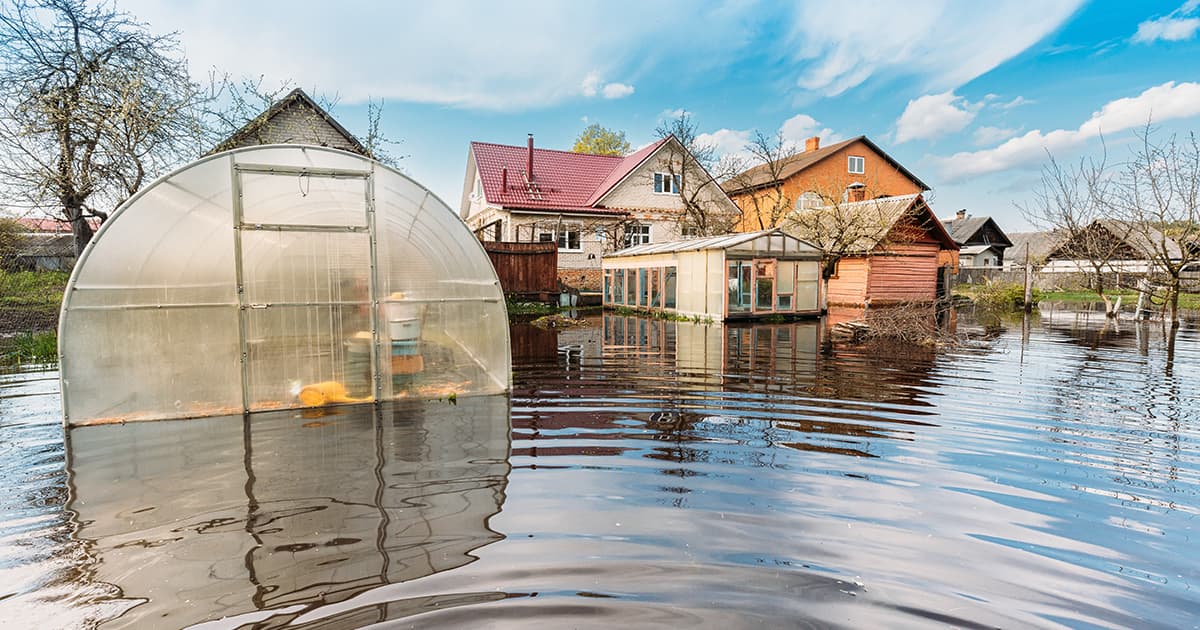How to Protect Your Home from a Spring Flood

Spring can bring unpredictable weather, including the potential for flooding. With melting snow, heavy rains, and swollen rivers, spring flooding can wreak havoc on your home and property if you're not prepared. It’s important to know that your home insurance does not cover overland flooding.
Let’s make sure you know how to protect your home property from a spring flood.
Understanding the risks of a spring flood
Floods can occur due to various factors, such as:
- Snowmelt: As temperatures rise, accumulated snow from winter can melt rapidly, overwhelming drainage systems and causing flooding.
- Heavy rains: Spring showers, coupled with already saturated ground, can lead to flash floods and overflowing rivers.
- Ice jams: Melting ice can form jams in rivers and streams, obstructing the natural flow of water and resulting in localized flooding.
Does my insurance cover a flood?
Water damage is the most common home insurance claim, but home insurance policies usually do not cover water damage from outside your home, like flooding.
You may be covered if water enters your home when a tree falls on it, but a flood typically will not be covered by basic home insurance.
Generally, home insurance policies don’t cover certain types of unexpected events, such as earthquakes, landslides, floods, and sewer backup. You may be able to get optional add-on coverage for some risks such as overland flooding that are not covered by your home insurance policy.
Preparing Your Home
- Inspect your property: Conduct a thorough inspection of your home and surrounding areas. Look for any signs of damage or vulnerabilities that may exacerbate flooding, such as cracks in the foundation or clogged gutters.
- Elevate valuables: Move valuable items, such as electronics, important documents, and sentimental belongings, to higher ground or upper floors to minimize potential damage.
- Install sump pumps: Consider installing a sump pump in your basement or crawl space to remove excess water and prevent flooding. Ensure it's in good working condition and has a battery backup in case of power outages.
- Secure utilities: Elevate electrical systems, heating units, and appliances above potential flood levels. Additionally, consider installing check valves to prevent sewage backup into your home.
- Landscaping measures: Modify your landscaping to encourage water drainage away from your home. This may involve regrading soil, installing French drains, or strategically placing gravel or mulch.
Emergency preparedness
- Create an emergency kit: Assemble a comprehensive emergency kit containing essential supplies such as water, non-perishable food, medications, flashlights, batteries, and a first aid kit. Keep it easily accessible in case of evacuation.
- Develop a family plan: Establish a family emergency plan detailing evacuation routes, meeting points, and communication strategies. Ensure everyone in your household is familiar with the plan and knows what to do in the event of a flood.
- Stay informed: Monitor weather forecasts and flood warnings issued by local authorities. Sign up for emergency alerts to receive timely notifications about potential hazards in your area.
As spring approaches, taking proactive steps to prepare for potential flooding can save you time, money, and stress in the long run. Stay informed, stay prepared, and stay safe this spring season.
Did you know? Switching is Easy! Save up to 30% on Home Insurance when you switch to Western Financial Group.


.jpg?300x300)
